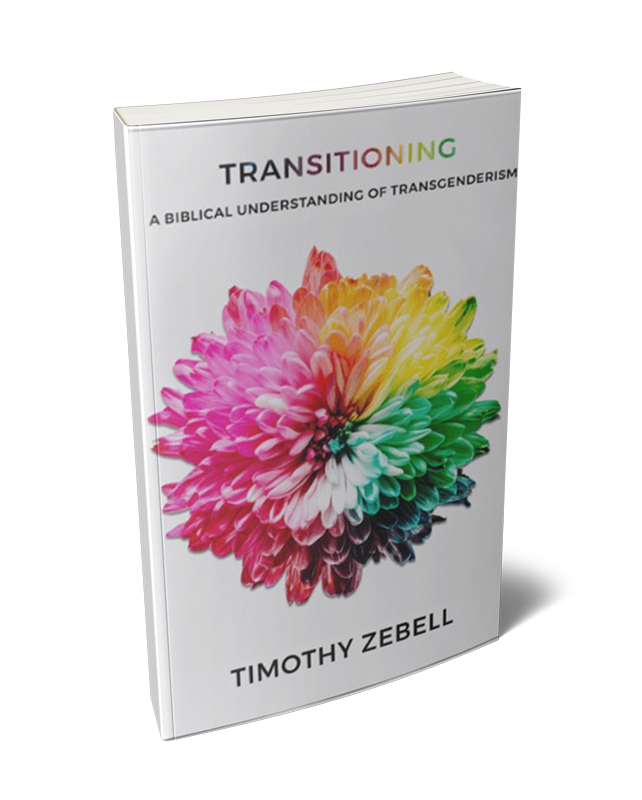Our theology determines our sexuality. What then does the Bible say about our physical bodies and our authority to design our sexuality?
According to the Bible, we as human beings are unique from the animals in that we have been created in the image of God. Precisely what is involved in serving as imagers of God has been greatly debated by theologians throughout the centuries, but one thing that has not been debated is the fact that mankind is created in God’s image. This is the clear teaching of Genesis 1:26–28:
Then God said, “Let us make man in our image, after our likeness. And let them have dominion over the fish of the sea and over the birds of the heavens and over the livestock and over all the earth and over every creeping thing that creeps on the earth.” So God created man in his own image, in the image of God he created him; male and female he created them. And God blessed them. And God said to them, “Be fruitful and multiply and fill the earth and subdue it, and have dominion over the fish of the sea and over the birds of the heavens and over every living thing that moves on the earth.”
The Hebrew word translated as “man” is adam and means “human being” or “the human race.”[1] Thus, Genesis 1:27 reveals that God made mankind in His own image, and mankind was created as consisting of male and female genders. Somehow our sexuality—the fact that we are gender-based creatures—is an integral part of our being created in God’s image.
Clearly, our sexuality is not the only aspect of being imagers of God because most animals are also created as sexual creatures, being male and female, but they are not created in the image of God. It is precisely because of the similarities between human and animal that so many theories exist regarding the image of God. Some have argued that just as God consists of three distinct Persons, so also, we are comprised of three—being body, soul, and spirit—and yet we are one. There are several other theories, but all of these theories are based upon deductive reasoning.
The one and only aspect of being created in God’s image that can be derived from the Genesis creation account is the fact that mankind has been created as sexual beings. In other words God’s only explanation of what being created in His image constitutes is that He created mankind as male and female. Interestingly enough, because God Himself is neither male nor female, and because male and female are quite different from one another both physically and emotionally, the image of God must be most complete in the complimentary nature of the two. In this sense, the image of God is greatest when male and female complement one another in unity. This unity is known as “marriage” and is described in Genesis 2:23–24, “Then the man said, “This at last is bone of my bones and flesh of my flesh; she shall be called Woman, because she was taken out of Man.” Therefore a man shall leave his father and his mother and hold fast to his wife, and they shall become one flesh.”
Regardless of whether we fully understand how this can all be true, we are compelled to accept that our being created in God’s image includes our sexuality because it is the clear teaching of God’s Word. The implications of this are significant. If the sexual design of our bodies is created by God as at least a partial reflection of Himself, then our sexuality is sacred. This too is evidenced within the text in Genesis 2:21–22, “So the LORD God caused a deep sleep to fall upon the man, and while he slept took one of his ribs and closed up its place with flesh. And the rib that the LORD God had taken from the man he made into a woman and brought her to the man.”
The sacred design of man in this text is obscured by the translation. The Hebrew word translated as “rib” is tsela which, in the 41 other occurrences of this word in the Old Testament, always refers to the side of something. In nearly every instance it refers to the side of sacral architecture, such as the Ark of the Covenant, or the temple.[2] Thus, Genesis 2:21–22 references Adam’s body as sacred architecture in its account of how gender was established.
There are many things about our bodies, our design, and our relationship to God’s image that we do not understand. Rather than succumb to the allure of exploring these grey areas, we as Christians should hold fast to what God has revealed. As Deuteronomy 29:29 says, “‘The secret things belong to the LORD our God, but the things that are revealed belong to us and to our children forever, that we may do all the words of this law.’”
Our bodies are sacred, and God has designed our bodies to best accomplish our specific purpose and role. Sometimes our bodies are corrupted by the influence of sin, and they are in need of restoration, but this is a far cry from reinventing our biological design. When this line is crossed, we find ourselves in the precarious position of having defaced God’s sacred architecture.
Be sure to read Timothy Zebell’s book Transitioning: A Biblical Understanding of Transgenderism.
Free Downloads
Share...
1. Baker, Warren and Eugene Carpenter. The Complete Word Study Dictionary: Old Testament, H#120, 15. Chattanooga: AMG Publishers, 2003.
2. The Hebrew word tsela (Strong’s H#6763), occurs 41 times in 33 verses: Gen. 2:21–22; Ex. 25:12, 14; Ex. 26:20, 26–27, 35; Ex. 27:7; Ex. 30:4; Ex. 36:25, 31–32; Ex. 37:3, 5, 27; Ex. 38:7; 2 Sam. 16:13; 1 Kings 6:5, 8, 15–16, 34; 1 Kings 7:3; Job 18:12; Jer. 20:10; Eze. 41:5–9, 11, 26.
Unless otherwise noted, all Scripture quotations are taken from The Holy Bible, English Standard Version, copyright ©2001 by Crossway Bibles, a publishing ministry of Good News Publishers. Used by permission. All rights reserved.









